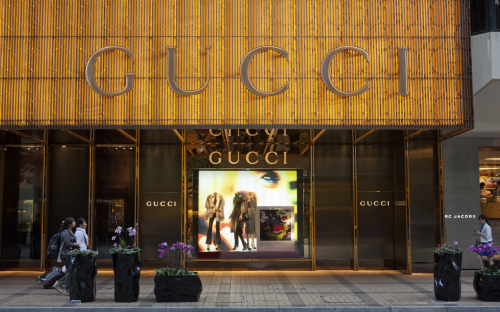“There is growing recognition and awareness of one-year masters degrees in management in the US,” says Russ Morgan, associate dean at North Carolina’s Fuqua School of Business.
But, like any new market offering, he says, it has “taken some time for people to fully understand and value” the experience and the skills the degree provides.
MiM’s sterling reputation in the C-suites of European listed companies have fuelled their rise across the Atlantic.
Among the star-studded alumni are Jean-Paul Agon, chief executive of French cosmetics group L'Oréal; François-Henri Pinault, CEO of Kering, the luxury conglomerate that owns Gucci; and industrial champion Lafarge’s chief, Bruno Lafont.
The launch by several big-brand US schools such as Fuqua, Kellogg and Mendoza College of MiMs illustrates the degree’s swelling international standing.
Yet it is in the grandes écoles of France and northern European universities that the degree’s seeds have been sown, quietly pumping out politicians such as French premier François Hollande and captains of industry for decades.
Demand however, is still robust. Julien Manteau, director of development at HEC Paris, says the top French business school typically receives 10,000 applications for its MiM, many from international students, with applications rising by 14% last year.
He says the growing global standing of the MiM is a response to career market trends. After the financial crisis, undergraduates feel they need to boost their employment credentials, and a pre-experience masters can give them an edge over the competition.
Companies are on the lookout for new educational offerings, says Professor Omid Aschariand, managing director of the MiM at University of St Gallen, ranked top globally by the Financial Times.
MiMs, although long popular on the Continent, are relatively fresh on the international stage.
Yet with so many new management programs coming out, MiM graduates could be squeezed in the jobs market between undergraduate and postgraduate students.
“Competition with postgraduate talent may increasingly occur, as the average age of a participant in a traditional MBA is decreasing,” says St Gallen’s Omid.
And in the US, where MiMs have in the past been slow to take off, there are questions over whether recruiters truly understand the degree’s value.
“It has required us and other schools to educate the employers,” says Amy Dittmar, senior associate dean for graduate programs at Michigan Ross School of Business, which launched its MiM last year, and has seen applications increase by 25%.
Nonetheless, 94% of the inaugural class were placed into companies, with management consultancy and financial services — including banks such as Credit Suisse — the most popular industries.
US schools tend to rely on their undergraduate programs for MiM students, with many designing MiMs to scoop up candidates from their liberal arts courses.
“We created the program for undergraduate students with a liberal arts or science education who wanted to be more competitive in the marketplace,” says Melanie Wright, director of the MS in Management Studies at Kellogg School of Management.
But as the program has broadened to include students from other backgrounds, the class size at Kellogg has more than doubled.
The growing global acceptance of MiM programs means the pool of applications for European schools is becoming ever more varied.
“The student body is increasingly more international and extremely diverse, not only in terms of nationality, but also in prior fields of study,” says Anne-Claire Pache, dean of masters programs at France’s ESSEC Business School, which launched its flagship MiM in 1907.
Applications have grown year-over-year, with applications from internationals growing “significantly”, she says.
This growth has called into question the impact such programs will have on other flagship business masters degrees, such as the MBA, but most schools say the MiM adds to their brand value.
Indeed, European business schools are increasingly expanding their programs into new markets to capitalize on surging international demand.
SKEMA Business School, for example, has set up shop in China and plans this year to expand its MiM into Brazil. France’s Kedge Business School too has developed programs internationally, with a three-year course launched in partnership with Beijing’s Renmim University.
The PGP, a two-year pre-experience masters similar to the traditional French MiM, has been all the rage in India at the elite institutes of management, such as IIM Ahmedabad.
But the PGP’s fate is undertrain because the IIMs face a shakeup from Prime Minister Narendra Modi, who has proposed establishing government control of the business schools.
While the degrees are poised to take off in the US, MiMs face further headwinds in Asia.
In China in particular, schools have a set limit on how many masters students they can admit, while there are restrictions on the fees they can charge. Also, legislation states masters programs must be at least two-years in length, compared with some schools like Wake Forest of the US, which offers a 10-month course.
Another issue for the MiM is a lack of international brand name. Program descriptions vary and there is no sign that business schools plan to unify their branding.
But the PGP, MS in Management, or MSc Management remains for many top schools the fastest growing program of their portfolio.
Anne van de Graaf, executive director of MSc programs at Rotterdam School of Management, says applications at the Dutch institution’s MiM have risen by 20% over the past three years, many of them coming from Germany, India and Italy.
“More and more schools are offering the program and more and more employers recognize the degree,” she says.
Student Reviews
Duke University Fuqua School of Business
RECAPTHA :
b8
67
07
40








